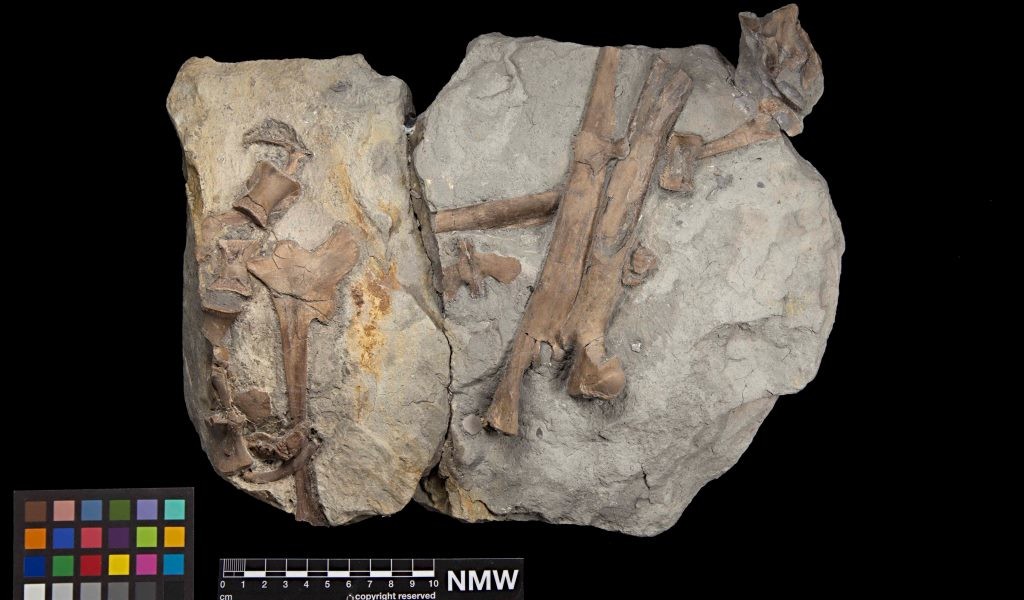This new Welsh dinosaur was a distant cousin of Tyrannosaurus rex and lived at the very earliest part of the Jurassic Period, 201 million years ago, possibly making it the oldest Jurassic dinosaur in the world. The fossil will be on display at the main hall of National Museum Cardiff from 9 June until 6 September 2015. The ‘discovery of a lifetime’ was made by two brothers from Llantwit Major, Nick and Rob Hanigan while fossil hunting along the Lavernock beach in the Vale of Glamorgan after storms in spring 2014.
After a cliff fall on the beach, they spotted several loose blocks containing part of the skeleton of a small dinosaur and collected the specimen, including its razor sharp teeth, and claws. The fossilised bones were found spread across five slabs of rock and although some were preserved together in the correct position, others had been scattered and separated by the actions of scavenging fish and sea-urchins. The specimen was preserved with the fossilised remains of these sea-urchins.
David Anderson, Director General of Amgueddfa Cymru – National Museum Wales said: “This is a very special discovery, and Nick and Rob Hanigan are incredibly generous in donating this wonderful specimen to the collection of Amgueddfa Cymru, to preserve it for future generations.We are delighted to have this specimen on display, which gives visitors a unique opportunity to examine the fossilised skeleton of the first meat-eating dinosaur found in Wales, and one of the oldest Jurassic dinosaur in the world.”
The brothers took time carefully preparing the specimen and then contacted Cindy Howells, palaeontology curator for Amgueddfa Cymru who, with the help of dinosaur experts from University of Portsmouth and the University of Manchester, analysed the teeth and bones. The team established that this particular dinosaur was a meat-eating dinosaur, from the theropod group. It also suggested that it was a juvenile animal as some of its bones are not yet fully formed. Research is still underway, with a scientific paper in progress which will reveal the name of this new species.
The Welsh dinosaur was a small, slim, agile dinosaur, probably only about 50cm tall and about 200cm long, which had a long tail to help it balance. It lived at the time when south Wales was a coastal region, offering a warm climate. It had lots of small, blade-like, sharp, serrated teeth suggesting that it would have eaten insects, small mammals and other reptiles. The dinosaur also probably had a fuzzy coating of simple proto-feathers, as did many theropod dinosaurs, and this would have been used for insulation and possibly display purposes. It may also have had simple quill-like structures for defence.
The rocks that contain the dinosaur fossil date back to a time immediately after the start of the Jurassic period, 201.3 million years ago. At that time, the dinosaurs were just starting to diversify and the Welsh specimen is one of the earliest Jurassic individuals in the UK. It is related to Coelophysis that lived approximately 203 to 196 million years ago in what is now the southwestern part of the United States of America. This new specimen is the first skeleton of a theropod found in Wales. Isolated teeth and bones of other dinosaurs have previously been found in south Wales near Bridgend, Barry and Cowbridge.










